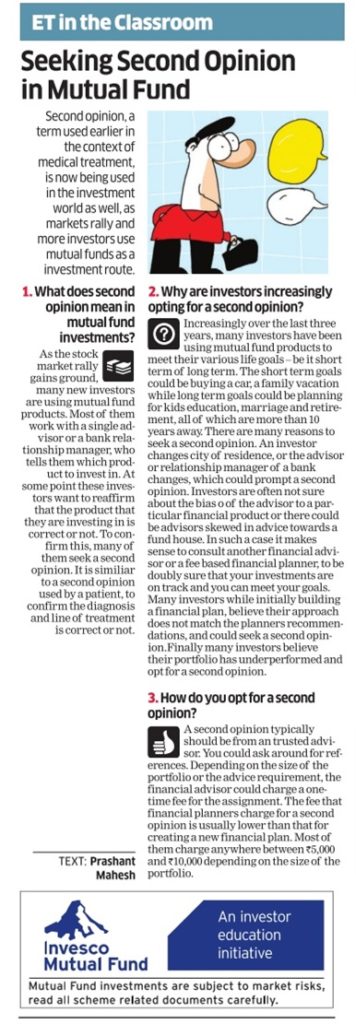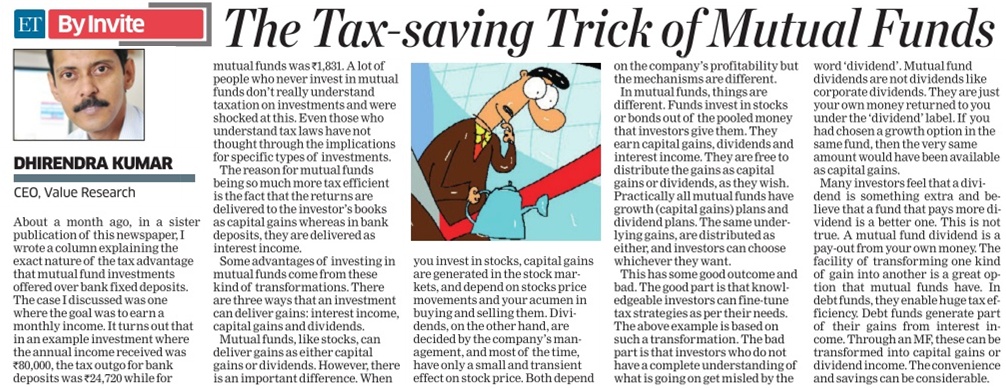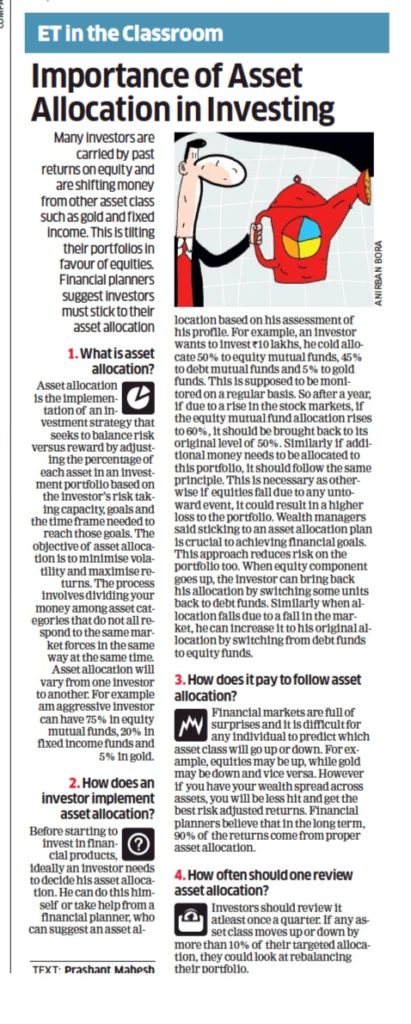Author: admin
Mutual Funds – You Have To Complete The KYC Process Before Investing In A Mutual Fund
KYC norms are mandated by the Prevention of Money Laundering Act (PMLA), to track the legality of funds used for investments
If you are a first-time investor in mutual funds, you need to comply with the Know Your Customer (KYC) norms. This is a one-time process that every mutual fund investor needs to do, to be able to invest in mutual funds. KYC norms are mandated by the Prevention of Money Laundering Act (PMLA), to track the legality of funds used for investments. Money laundering refers to converting money that is earned through illegal ways into legal money by passing it through various banking channels. This makes it difficult for authorities to track the ‘dirty money’ to its illegal origins. There are three ways you can complete your KYC process.
Physical KYC
Download the KYC form, which is available on websites of all the fund houses, registrar and transfer agents (R&Ts) and Association of Mutual Funds of India (Amfi: the mutual fund industry’s trade body). Download the form, fill it and submit it to your fund house’s office or any of the four R&Ts that are present in the Indian mutual funds industry. An R&T services mutual funds and also handles all the customer queries. There are four such R&Ts in Indian mutual fund industry: Computer Age Management Services Ltd, Karvy Computershare, Sundaram BNP Paribas Fund Services, and the in-house R&T for Franklin Templeton Asset Management (India) Pvt. Ltd.
You can submit your completed KYC application form at any of their branches or at any fund house. Don’t forget to take along your original supporting documents and their copies as well.
A few tips: Fund houses and R&Ts tell us that you cannot do KYC first and then start investing in a mutual fund at a later date. A senior Cams official told Mint that “the KYC application has to be accompanied by a mutual fund transaction form. That’s because R&Ts act on behalf of mutual funds when they interact with you, the investor. And since “C” in KYC stands ‘customer’, you need to be a customer of financial institution to do a KYC; the institution here being a mutual fund”. Remember, each R&T works as a back office to only a certain number of funds. Visit their websites to know which fund house they service and accordingly visit the R&T that services the funds in which you want to invest. Remember, if you invest in a Cams-serviced fund today, and do your KYC with Cams at the same time, you don’t need to do your KYC again in future, even if you invest in a fund house that Karvy Computershare services. Your KYC is just a one-time process.
e-KYC: Aadhaar –based OTP
If you don’t want to go to a branch, then you can complete this process online. This is completely paperless. However, you need to have your Aadhaar number. Once you choose the fund house you wish to invest in, you can visit its website and start your Aadhaar-based eKYC. Enter your PAN and choose the option that says you are not KYC-compliant. You will then be asked details like your mobile number (make sure you key in the same number that is registered with Aadhaar) and other details. You will then get a one-time password (OTP) on your mobile. Enter the OTP and your KYC is done.
Remember, this method, though easy, comes with limitations. You can only invest up to Rs50,000 per fund house each year. If you wish to invest more, you need to do the physical KYC or a biometric KYC.
e-KYC: Aadhar-based biometric
This is another convenient way of doing your KYC, provided you have an Aadhaar number. You can either walk into a Cams branch or ask your distributor or financial adviser to do it for you. Your distributor will visit you with her mobile phone and a separate fingerprint mapping device. She would have a KYC app on her mobile phone. And then she would connect the fingerprint scanner to the phone. You need to scan your thumb on this device, which will then connect to the Aadhaar database. You will enter few basic personal details also. Once the fingerprint matches, your photo pops up on the mobile phone screen (this is the same photo that is there in your Aadhaar records). When you see this photo, it means that your KYC is approved and you are good to invest.
In this method, there is no limit to which you can invest, just like when you do the physical KYC.
Mutual Funds – How To Choose A New Fund Offer (NFO)
The first thing you should check in an NFO is if the scheme offers you something interesting and unique
Recently, the mutual fund street saw two big-ticket new fund offers (NFO) from two of India’s largest fund houses. It’s a good occasion to go through a check list on how to select a new fund.
Anything unique?
There are close to 2,000 mutual fund schemes in the market. Why, then, should you invest in a new one? The first thing you should check is if the scheme offers you something interesting and unique. After all, existing schemes are good enough to take care of most of your needs. Typically, it’s safer to go with existing schemes that come with an established track record than going with something that is totally new.
Costs
Though NFOs are barred from charging NFO fees, they will still charge fees every year. Equity funds are mandated to charge a maximum of 2.5% of your weekly average net assets, every year; debt funds up to 2.25%; and index and ETFs up to 1.5%. The Securities and Exchange Board of India has also allowed fund houses to charge 30 basis points for going to ‘beyond top-15’ towns, subject to a certain amount coming from such places, and another 20 basis points in lieu of exit loads. One basis point is one-hundredth of a percentage point.
But the annual costs are supposed to come down as the fund’s size grows. Some fund houses voluntarily cut costs further, mainly due to competition. Check your NFO’s scheme information document to see if the fund house has a track record of bringing down expense ratios of other schemes. You might have to do a bit of hard work here and check with your adviser or distributor; or browse through past fact sheets if you want to invest directly with the fund house. See past few years’ fact sheets to check the scheme’s expense ratio track record.
Taxation
All mutual funds are not taxed the same way. Debt funds impose a short-term capital gains tax at your income tax rates (10.3%, 20.6% or 30.9%) if you redeem the units before 3 years. After 3 years, long-term capital gains tax is applicable at 20.6%, with indexation benefits. Equity funds impose a short-term capital gains tax of 15% if you redeem units before a year. If you withdraw your equity mutual fund units after a year, there is no long-term capital gains tax to be paid.
Although taxation should not be the primary reason for investing or avoiding a mutual fund, it pays to know your fund’s tax status, especially if your NFO aims to swing between equity and debt.
Lock-in or closed-end
Check if the scheme is open-ended or closed-end. A closed-end scheme comes with a fixed tenure and you would only be able to exit the fund after its tenure—typically 3-5 years, occasionally it could be 10 years—gets over. Such schemes are, however, mandatorily listed on the stock exchange. But you can only sell them if there is liquidity, else you have to take a hit on the market price, which could be at a significant discount to its prevailing net asset value.
A lock-in is different. Open-ended funds like tax-saving schemes too have a lock-in. In the lock-in period, you cannot exit the scheme, even on the stock exchange.







